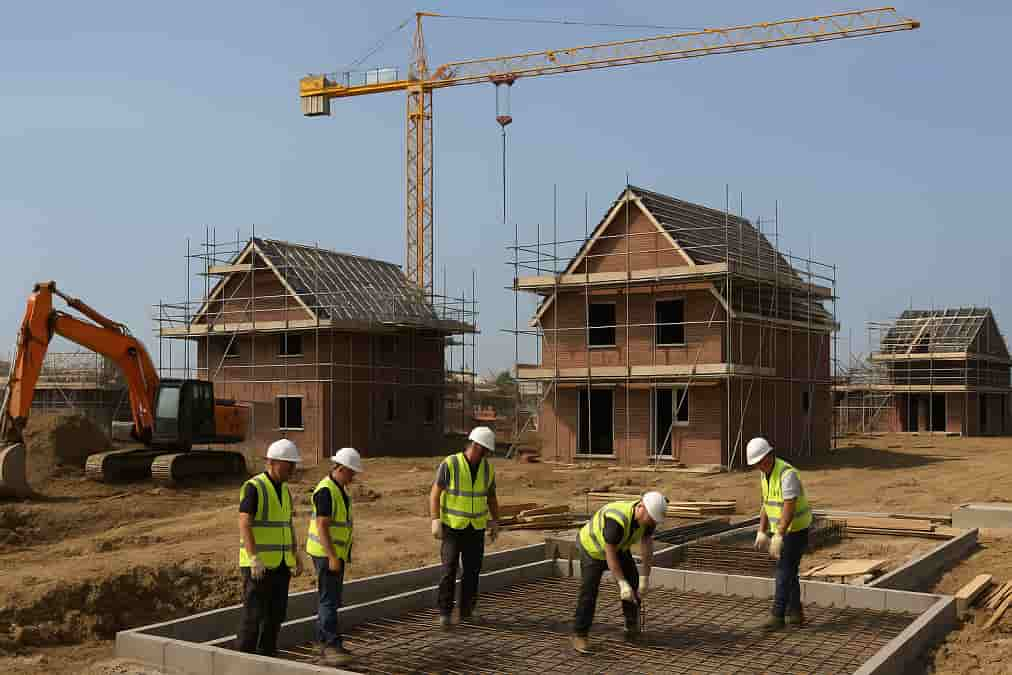Britain’s construction workforce is facing renewed pressure after a fresh decline in housebuilding sent sector-wide activity into its steepest downturn since the early months of the pandemic.
According to the latest figures from the S&P Global UK Construction Purchasing Managers’ Index (PMI), activity in the construction industry plummeted to 44.3 in July—down from 48.8 in June. This marks the lowest point since May 2020, when the country was grappling with widespread shutdowns due to COVID-19.
The PMI, which measures month-on-month changes in total industry output, indicates contraction when it falls below the 50.0 threshold. A reading of 44.3 signals a rapid loss of momentum, particularly damaging during a season when the industry would typically expect to see increased on-site activity.
The decline hit all three key sub-sectors of the construction industry: civil engineering, commercial construction, and residential building. Civil engineering projects recorded the most dramatic slowdown, with firms citing a notable decrease in public-sector works. Meanwhile, commercial and housebuilding contractors continued to battle reduced demand and sluggish consumer confidence.
Housebuilding, which had shown a flicker of optimism in June by returning to growth for the first time in nine months, slumped back into decline. Many firms reported site delays, dwindling project pipelines, and a rise in customer hesitation.
Joe Hayes, principal economist at S&P Global Market Intelligence, described the downturn as a “fresh setback” for the UK construction sector. “Firms are preparing for challenging times ahead,” Hayes noted. “They’re buying fewer materials and trimming their workforce.”
Indeed, the survey revealed that construction workers in the UK employment sector contracted for the seventh consecutive month, with companies pausing recruitment, reducing headcount, and not replacing departing staff. This trend signals reduced confidence in near-term market recovery and presents further concern for skilled workers already facing job insecurity.
Anecdotal feedback from construction businesses highlighted a lack of tender opportunities and broader uncertainty in both domestic and international markets. This atmosphere of indecision has created a cautious climate for investment and planning.
However, analysts argue that the longer-term outlook could brighten if expected policy shifts and economic developments materialise. Elliott Jordan-Doak, senior UK economist at Pantheon Macroeconomics, pointed to potential interest rate cuts and infrastructure-focused government spending as catalysts for recovery and why getting a job in the UK construction industry can now be lucrative.
“The Bank of England lowered its interest rates in August, which will ease borrowing pressures,” Jordan-Doak said. “In addition, planning reforms and government investment initiatives may help rebuild momentum in the sector over the coming months.”
Despite these cautious notes of optimism, the current figures underscore the vulnerability of the construction industry to broader economic shifts. Construction firms—large and small—are bracing for continued volatility, while workers across the sector are being urged to stay alert to job risks and changing conditions amid sluggish housebuilding performance.
This slowdown not only impacts bricks and mortar but also has a knock-on effect across the wider economy, from suppliers and logistics operators to local communities that rely on the UK construction workforce.
As the country awaits further economic signals in the coming months, construction workers, contractors, and industry bodies will be watching closely for a sign of sustained recovery—or deeper challenges ahead.




